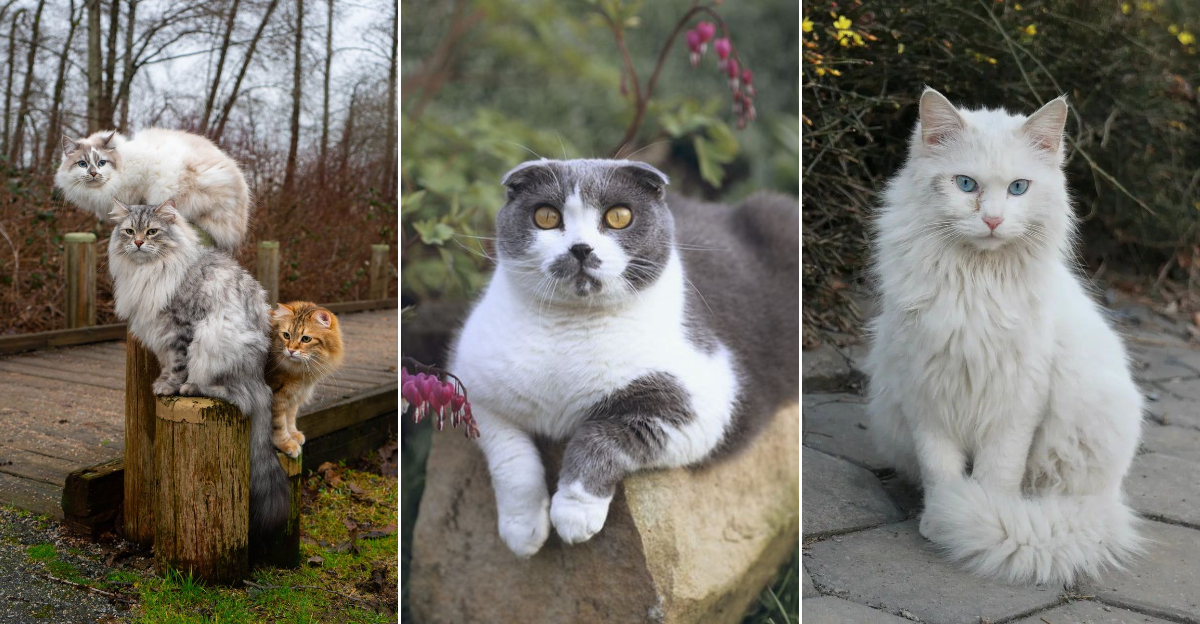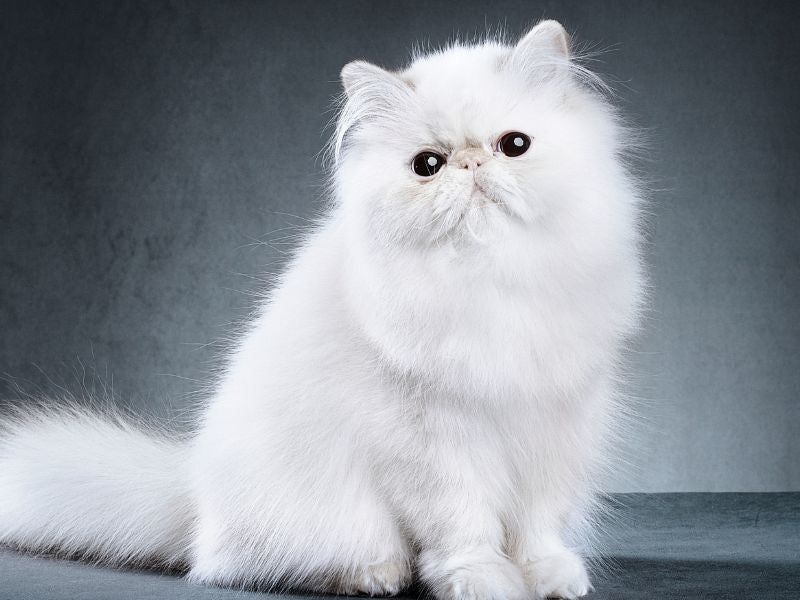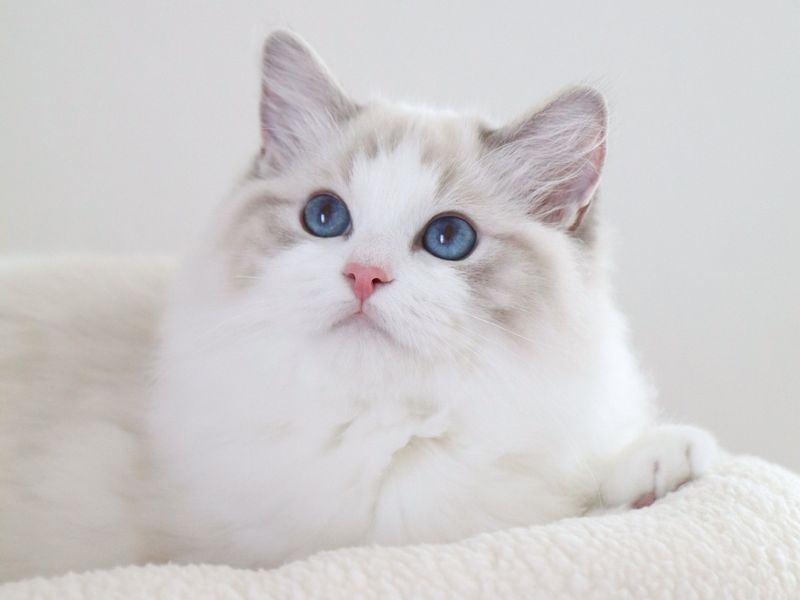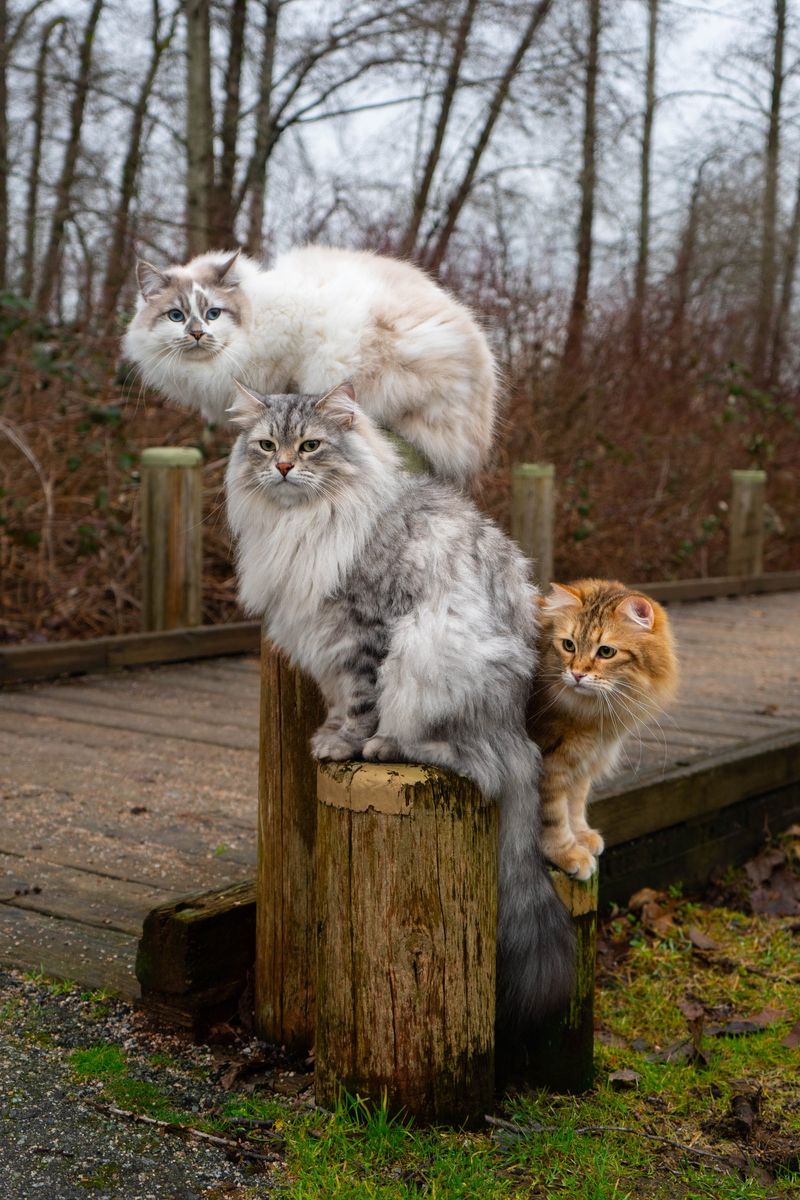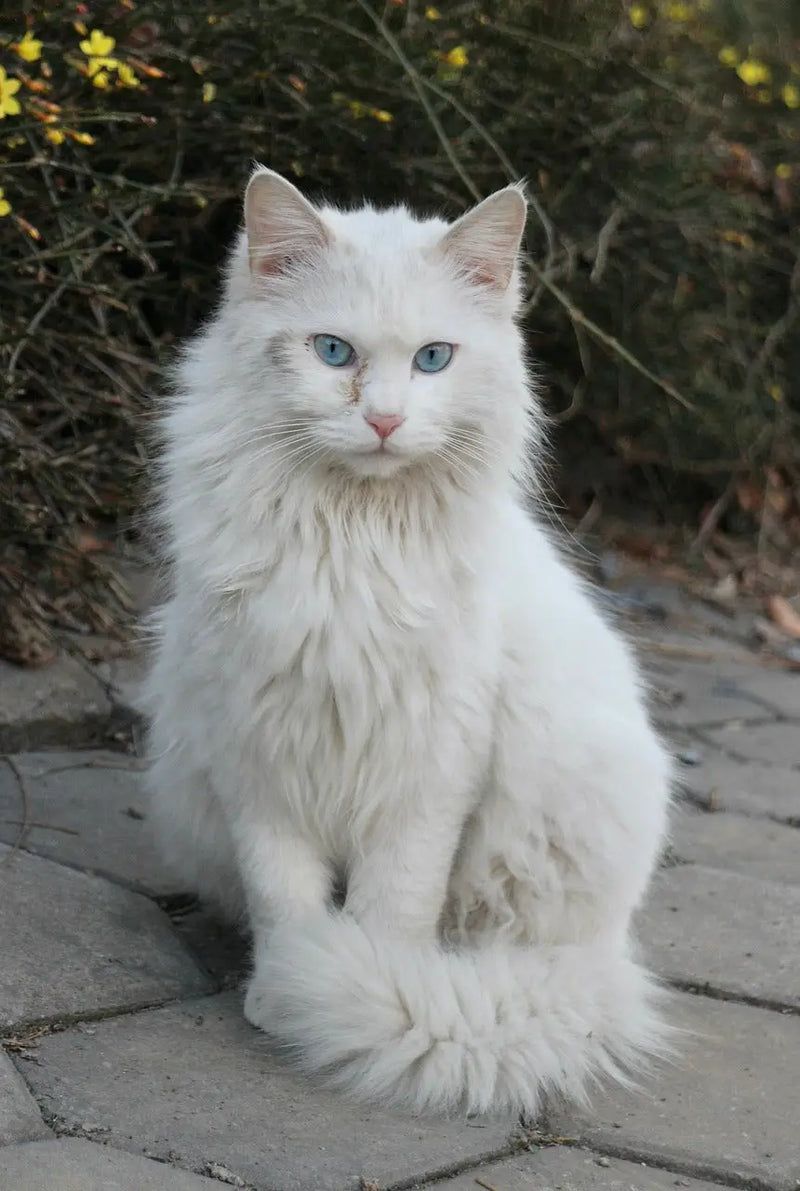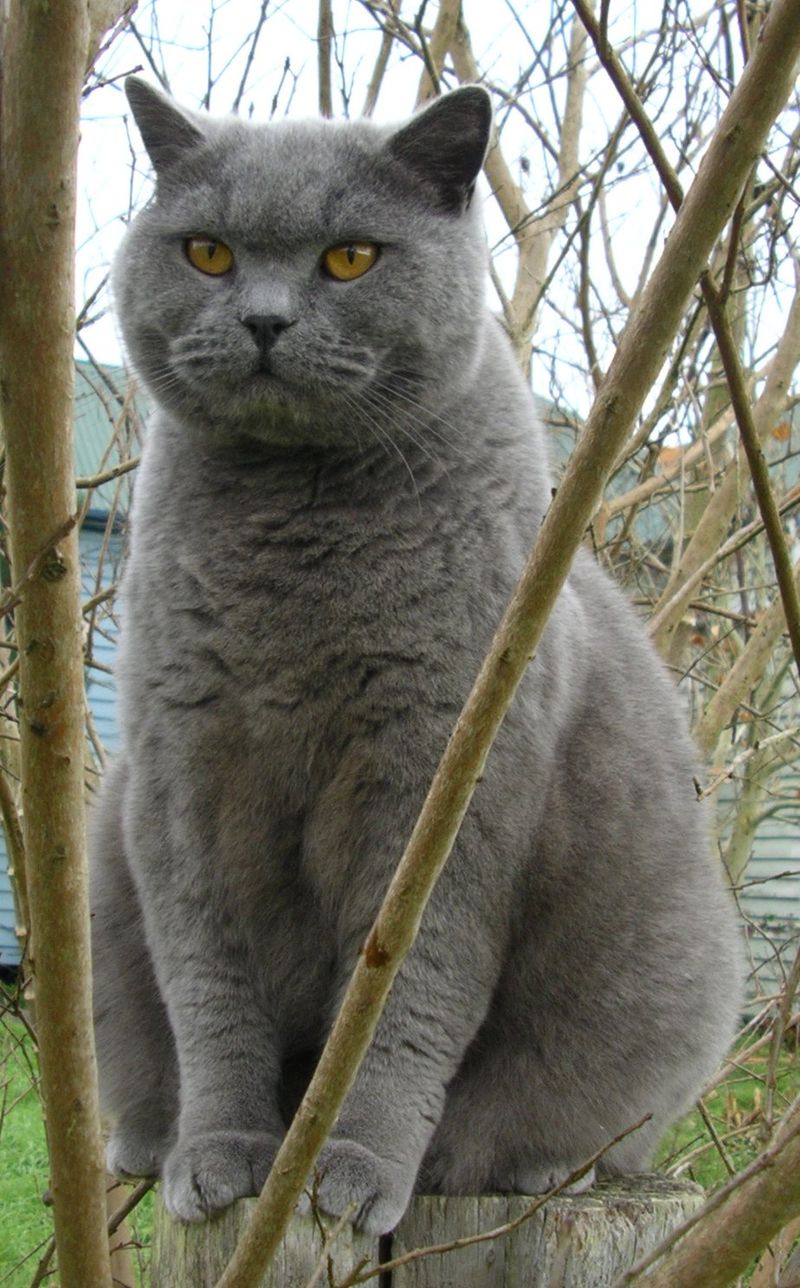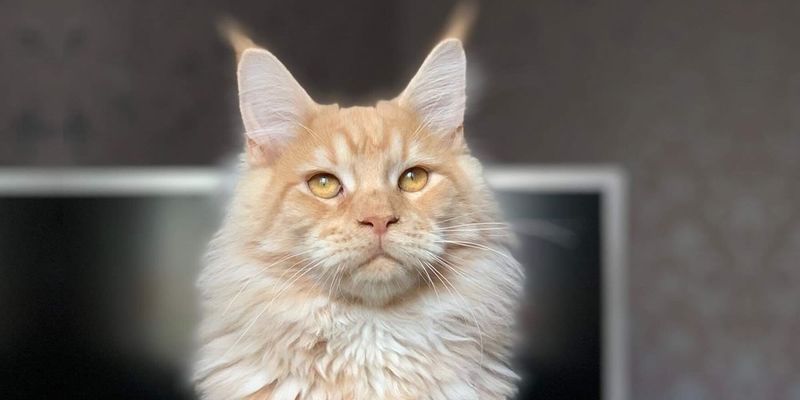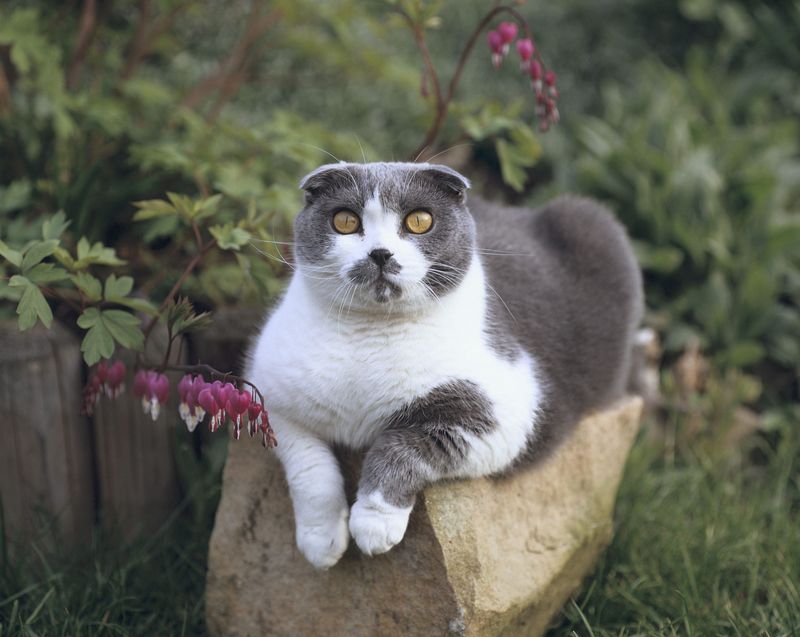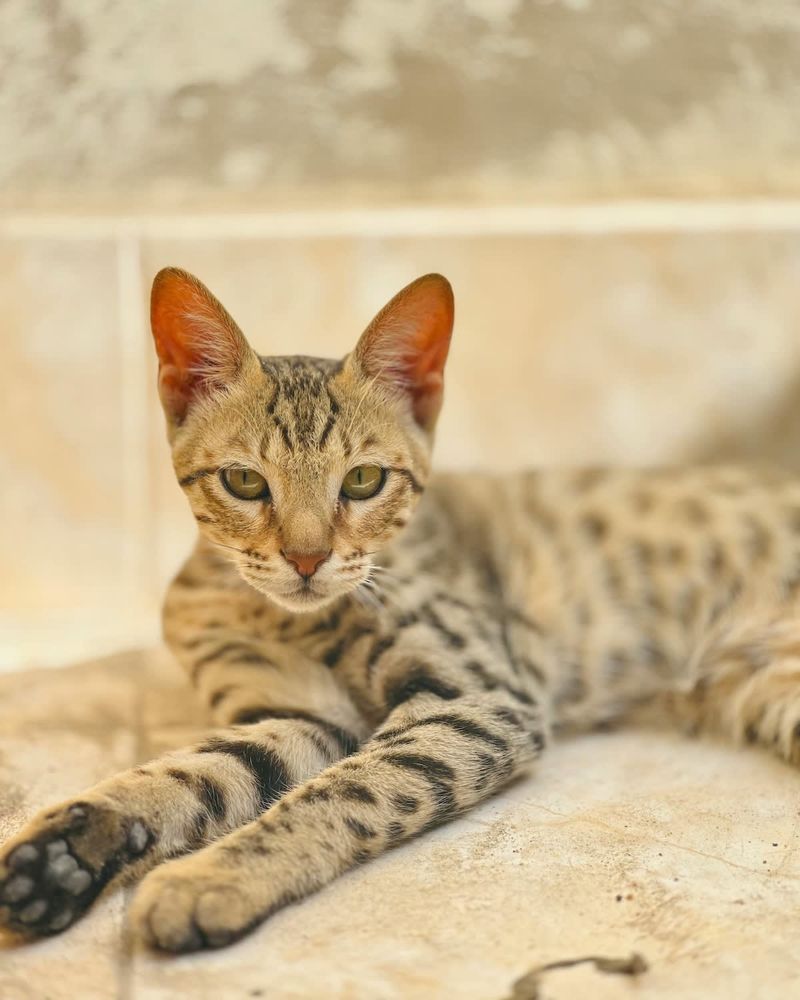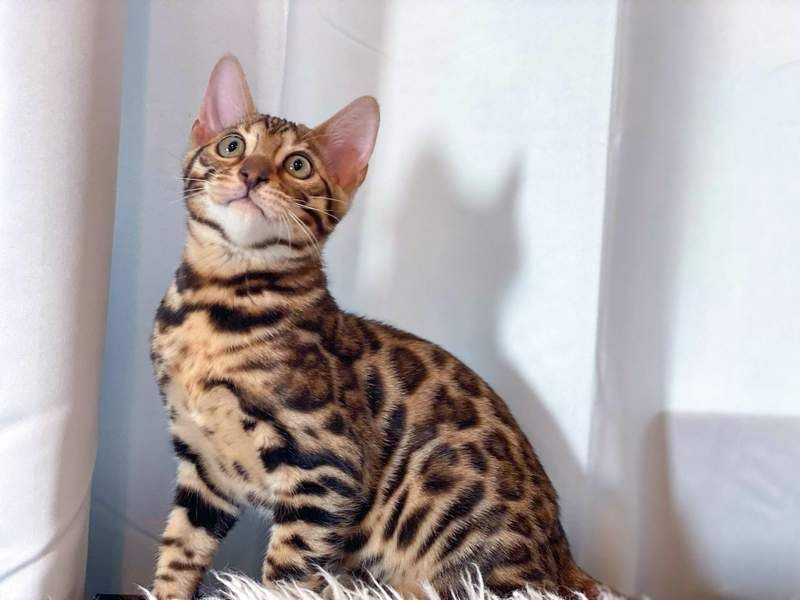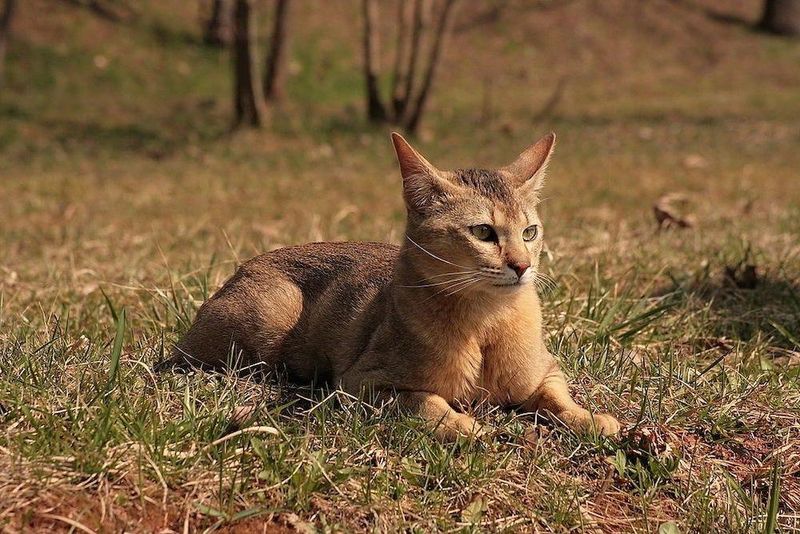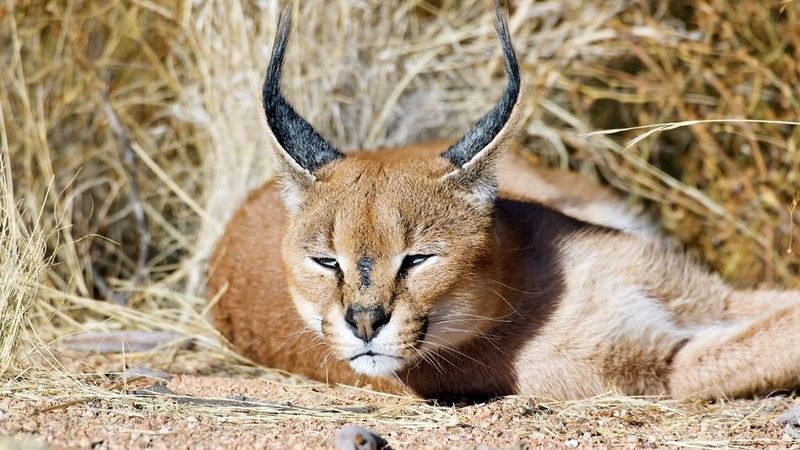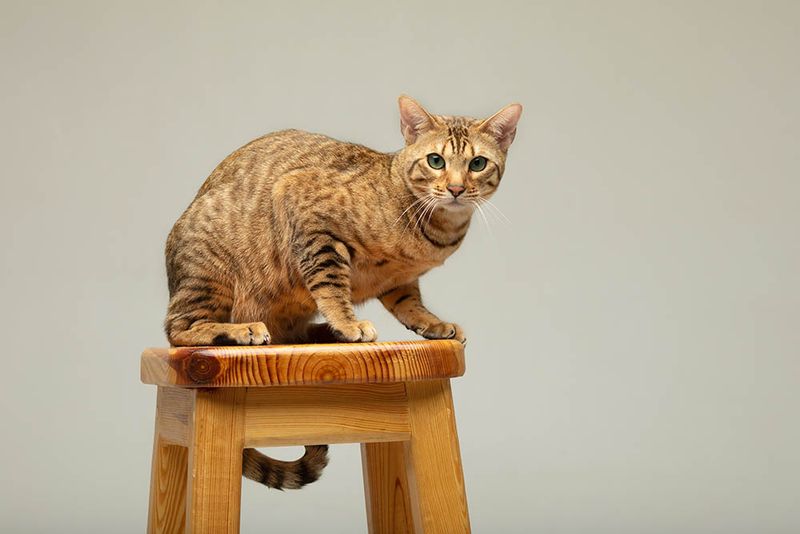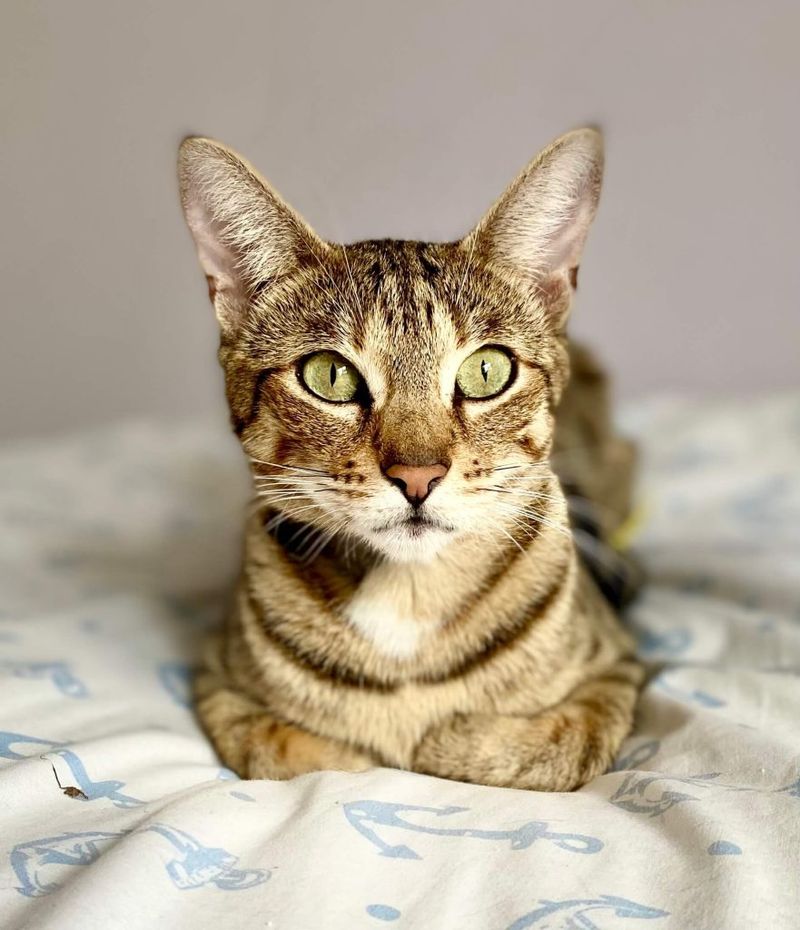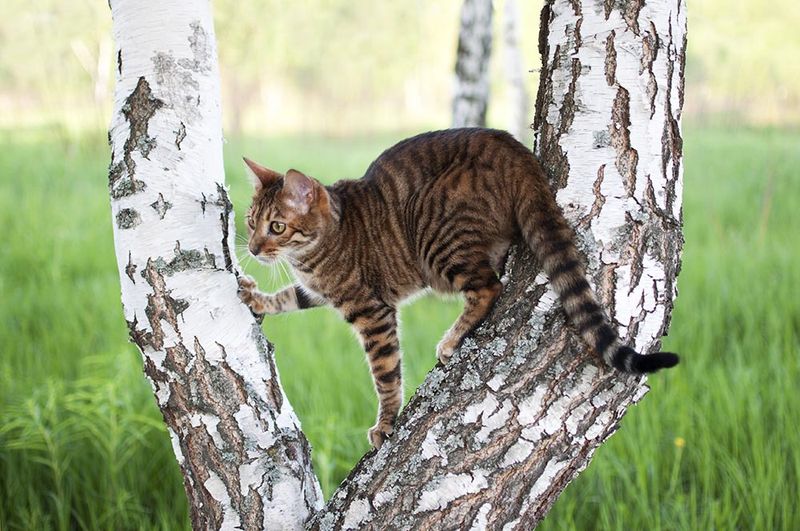📖 Table of Content:
Cat lovers know that our feline friends come in all shapes, sizes, and temperaments. Some cats are born to strut down runways with their gorgeous coats and elegant demeanor, while others have wild instincts that would make them right at home in a jungle setting. Whether you prefer a pampered pageant winner or admire the untamed spirit of jungle-ready felines, this list highlights the diversity of our purring companions.
1. Persian
Royalty in fur form, Persians have been winning beauty contests since the Victorian era. Their luxurious long coats require daily brushing to maintain that show-stopping appearance.
The signature flat face and expressive round eyes give Persians an eternally sweet expression that melts hearts instantly. These cats move with deliberate grace, never rushing or appearing undignified.
Persians prefer quiet environments where they can lounge on velvet cushions, looking pretty. Their calm temperament makes them perfect companions for those who appreciate beauty and tranquility in equal measure.
2. Ragdoll
Named for their tendency to go limp when picked up, Ragdolls are the supermodels of the cat world. Their striking blue eyes contrast beautifully with their color-point coats that come in various patterns.
Despite their size—males can reach 20 pounds—Ragdolls move with unexpected elegance. They’re known for following their humans from room to room like devoted fans.
The semi-long fur feels silky to the touch yet requires minimal grooming compared to other longhaired breeds. A Ragdoll’s beauty isn’t just fur-deep; their sweet personalities and doglike loyalty make them beloved companions.
3. Siberian
Hailing from Russia’s forests, Siberians combine rugged good looks with show-stopping charisma. Their thick triple coat evolved to withstand harsh winters, but also gives them a majestic appearance worthy of any competition.
Athletic and powerful, these cats can jump impressive heights yet move with unexpected refinement. Their slightly rounded ears, topped with tufts of fur, add to their regal appearance.
Siberians develop strong bonds with their families and often greet visitors with confidence. Their hypoallergenic qualities make them accessible beauties—many people who typically suffer from cat allergies can live comfortably with these stunning felines.
4. Turkish Angora
Turkish Angoras possess the kind of effortless beauty that turns heads. Their silky, medium-length coat flows with their graceful movements, creating a vision of elegance in motion.
Prized in their native Turkey for centuries, these cats often have mismatched eyes—one blue and one amber—adding to their exotic allure. Their fine bone structure and slim legs give them a delicate appearance that belies their playful nature.
Turkish Angoras carry themselves with confidence and poise. These cats have natural star quality, seeming to know exactly how beautiful they are as they pose on windowsills or prance through the house with their plumed tails held high.
5. British Shorthair
British Shorthairs bring to mind teddy bears with their round faces, plush coats, and chunky bodies. The classic blue-gray variety resembles living velvet, though they come in many colors and patterns.
Their compact, powerful build gives them a substantial presence without being overwhelming. Famous for their Cheshire Cat grin, British Shorthairs have a permanently amused expression that photographers love.
These cats move with deliberate steps and quiet dignity. While not as flashy as some breeds, their understated elegance and perfect proportions make them consistent winners in cat shows, where judges appreciate their excellent breeding and balanced features.
6. Maine Coon
Gentle giants of the cat fancy, Maine Coons combine impressive size with show-stopping features. Their tufted ears, lynx-like facial ruff, and bushy tails create a dramatic silhouette that commands attention in any setting.
Males can weigh up to 25 pounds, yet they move with surprising agility and grace. Their rectangular body shape and muscular build give them the appearance of miniature lions with friendly faces.
Maine Coons develop slowly, not reaching full size until age three or four. Their water-resistant shaggy coat comes in numerous colors and patterns, adding to their versatility in the show ring where they frequently take top honors.
7. Scottish Fold
Scottish Folds captivate everyone with their unique folded ears that give them an owl-like appearance. This distinctive feature results from a natural genetic mutation first discovered in a barn cat named Susie in 1961.
Their round eyes, full cheeks, and compact bodies create an overall impression of adorable roundness. Scottish Folds move with a smooth, easy gait that showcases their well-proportioned bodies.
Beyond their unusual ears, these cats have sweet expressions that seem perpetually curious or surprised. Their plush coats come in various colors and patterns, but it’s their endearing folded ears and innocent faces that make them stand out in any cat pageant.
1. Savannah
Half domestic cat, half wild serval, Savannahs bring the jungle into living rooms with their exotic spotted coats. Their long legs and lean bodies give them a cheetah-like appearance that’s impossible to mistake for any other breed.
Standing up to 17 inches tall, these cats can leap onto refrigerators from a standstill. Their large ears swivel independently to track sounds, just like their wild ancestors hunting in tall African grasses.
Savannahs retain many wild behaviors, including a love of water and a tendency to “chirp” rather than meow. Their high energy levels and need for stimulation make them challenging pets, but their wild beauty is undeniable.
2. Bengal
Bengals bring the wild into domestic settings with their spectacular rosette markings reminiscent of leopards. Their coats feature a unique glitter effect that makes them sparkle in sunlight, as if dusted with gold.
Athletic and muscular, these cats move with the confident prowl of their Asian leopard cat ancestors. Many Bengals enjoy water and will join their owners in the shower or play in sinks.
Despite their wild appearance, modern Bengals are several generations removed from their wild ancestors. They combine the striking appearance of jungle cats with domestic temperaments, though they retain high energy levels and intelligence that requires regular mental stimulation and exercise.
3. Chausie
Created by crossing domestic cats with jungle cats, Chausies maintain the wild essence of their ancestors. Their tall, lean bodies can reach up to 30 pounds, making them one of the largest domestic breeds.
Chausies possess remarkable jumping abilities, easily clearing six feet from a standing position. Their coats come in limited colors—solid black, brown ticked tabby, or grizzled tabby—all designed to provide camouflage in natural settings.
The almond-shaped eyes and tall ears give Chausies a perpetually alert expression. These cats require significant space and stimulation to satisfy their wild instincts, making them unsuitable for apartment living or sedentary owners.
4. Caracal
Not truly domestic, caracals represent what our house cats might have become if they’d remained wild. Their most striking feature is their black-tufted ears that can reach 1.75 inches long, acting as communication signals to other caracals.
These medium-sized wild cats have powerful hind legs that allow them to leap over 12 feet high and catch birds in mid-flight. Their tawny coats provide perfect camouflage in their native habitats across Africa, the Middle East, and India.
Caracals are solitary hunters with incredible speed and agility. Some wealthy enthusiasts keep them as exotic pets, but they retain their wild instincts and can never truly be domesticated.
5. Serengeti
Developed to resemble the African serval without any wild blood, Serengetis achieve the exotic look through careful breeding. Their spotted coats and long legs create a convincing illusion of wild heritage.
Serengetis possess remarkable athleticism, capable of impressive vertical jumps and bursts of speed. Their large, round ears serve as effective heat dissipators, just like those of cats native to hot climates.
Unlike true hybrid breeds, Serengetis combine their wild appearance with completely domestic temperaments. They form strong bonds with their humans while maintaining independent spirits. Their moderate energy levels make them more adaptable to various living situations than true wild hybrids.
6. Ocicat
Ocicats trick the eye with their wild spotted coats despite containing no wild DNA whatsoever. Created by crossing Siamese, Abyssinian, and American Shorthair cats, they’ve achieved the exotic look without the unpredictable temperament.
Their muscular bodies and athletic builds hint at jungle heritage they don’t actually possess. The distinctive spots come in twelve different color combinations, with classic silver or tawny varieties most closely resembling ocelots.
Ocicats combine their wild appearance with thoroughly domestic personalities. They enjoy interactive play and form strong bonds with their humans, making them perfect for those who want the jungle look with a reliable, affectionate temperament.
7. Toyger
Engineered to mimic miniature tigers, Toygers showcase dramatic striped patterns on bright orange backgrounds. Breeders continue refining the breed to develop circular facial markings, stronger striping, and more vivid coloration.
Unlike big cats, Toygers have completely domestic temperaments. Their medium-sized, athletic bodies move with the smooth confidence of wild cats while maintaining the friendly disposition of house pets.
The name “Toyger” combines “toy” and “tiger,” perfectly describing these small but impressive felines. They represent a conservation-minded approach to exotic pets—satisfying the desire for tiger-like companions without endangering wild populations or creating unpredictable hybrid animals.
